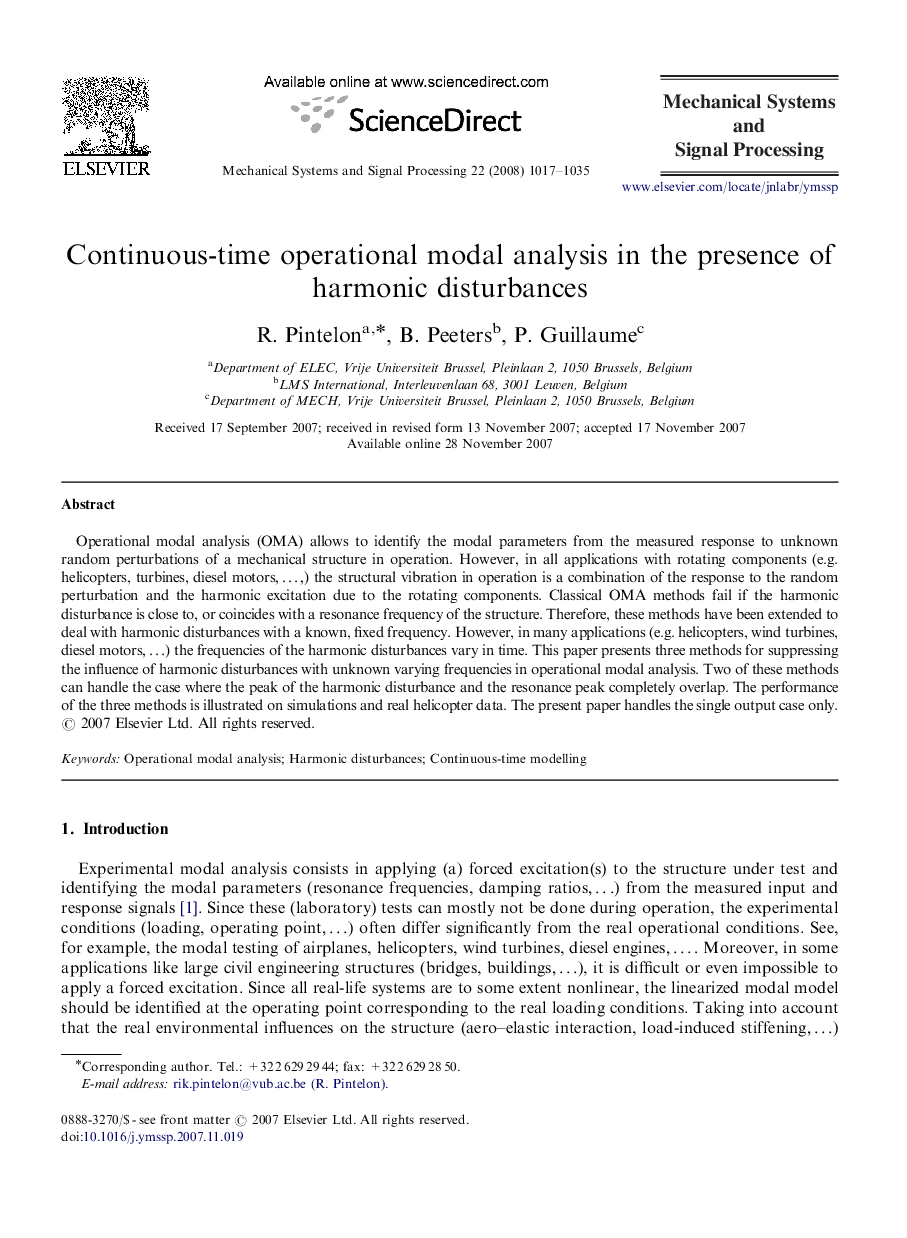| Article ID | Journal | Published Year | Pages | File Type |
|---|---|---|---|---|
| 559873 | Mechanical Systems and Signal Processing | 2008 | 19 Pages |
Operational modal analysis (OMA) allows to identify the modal parameters from the measured response to unknown random perturbations of a mechanical structure in operation. However, in all applications with rotating components (e.g. helicopters, turbines, diesel motors,…,motors,…,) the structural vibration in operation is a combination of the response to the random perturbation and the harmonic excitation due to the rotating components. Classical OMA methods fail if the harmonic disturbance is close to, or coincides with a resonance frequency of the structure. Therefore, these methods have been extended to deal with harmonic disturbances with a known, fixed frequency. However, in many applications (e.g. helicopters, wind turbines, diesel motors,…motors,…) the frequencies of the harmonic disturbances vary in time. This paper presents three methods for suppressing the influence of harmonic disturbances with unknown varying frequencies in operational modal analysis. Two of these methods can handle the case where the peak of the harmonic disturbance and the resonance peak completely overlap. The performance of the three methods is illustrated on simulations and real helicopter data. The present paper handles the single output case only.
